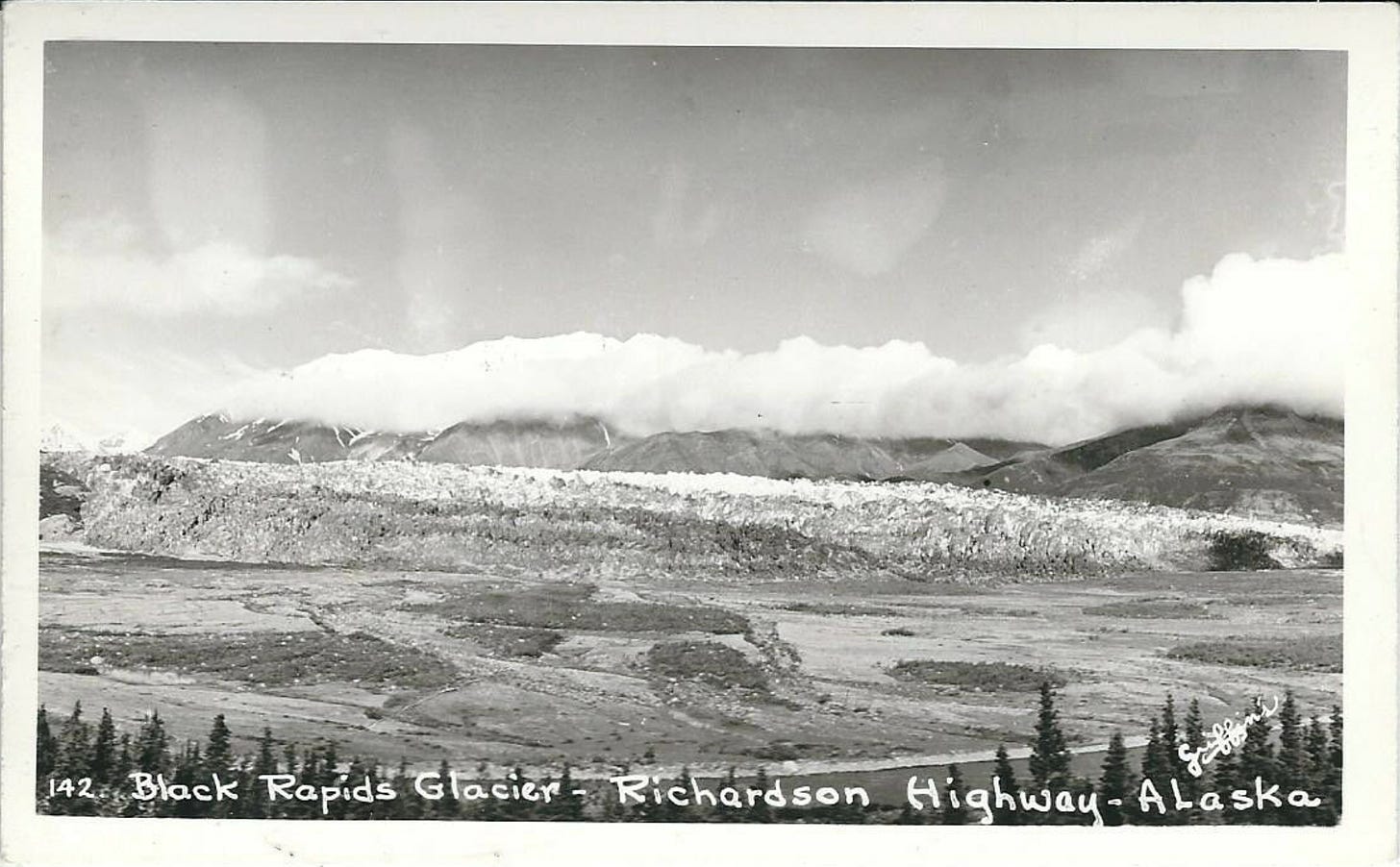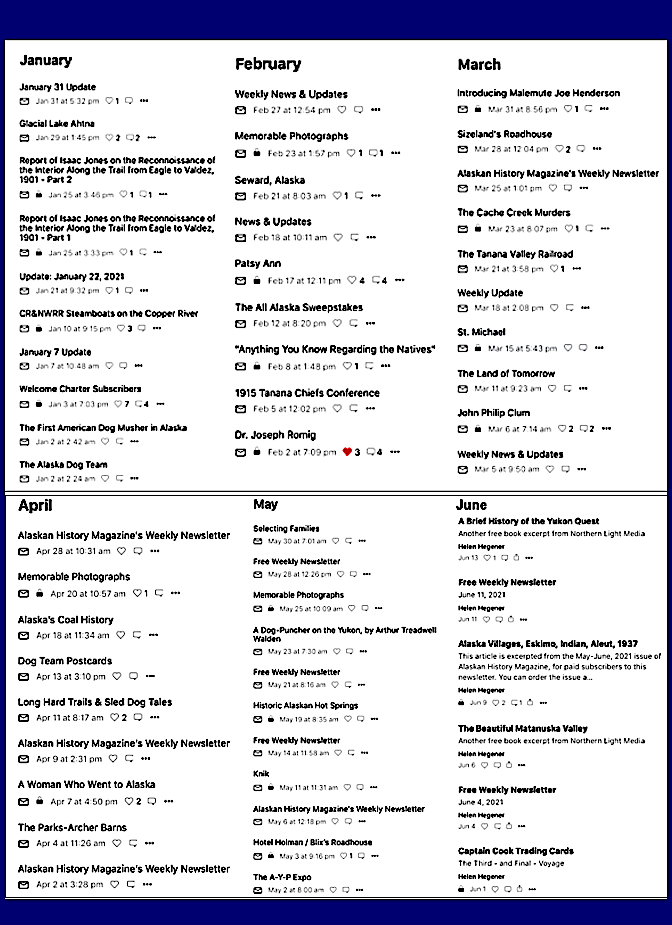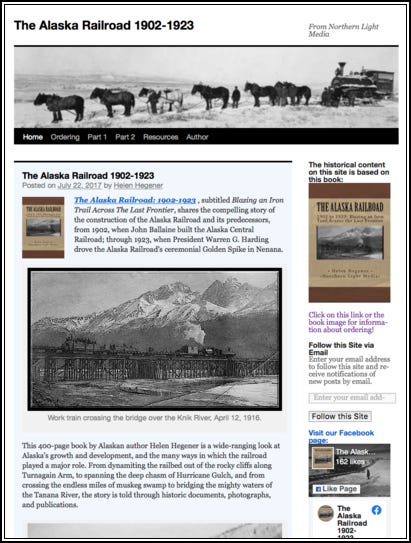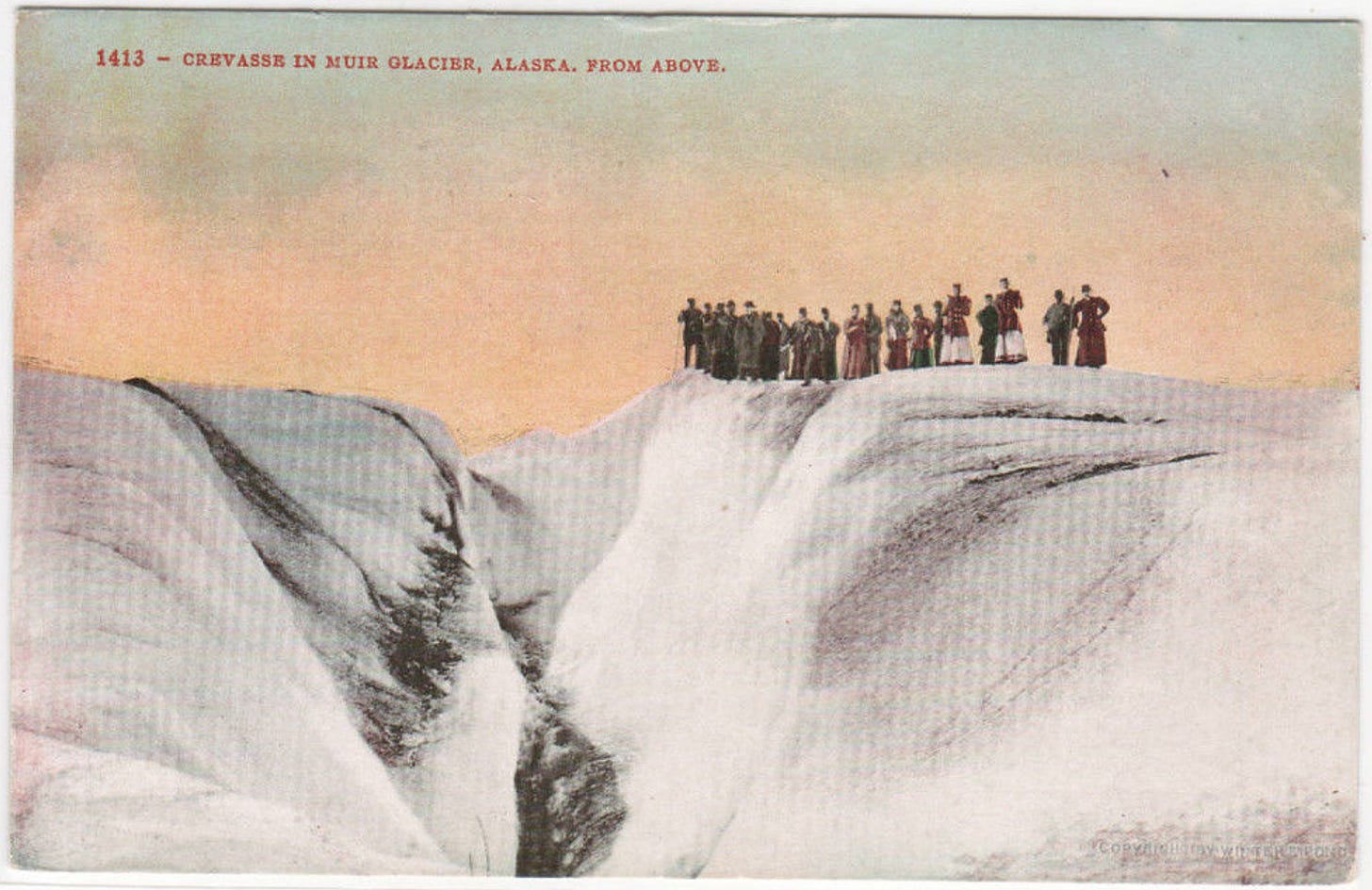Hello Readers,
The July-August issue is in the mail to those who purchased print copies, and editing of the Sept-Oct issue has started. Hard to believe I’m working on this year’s fifth issue already; only one more issue after that to wrap up 2021!
Vintage Postcards
Vintage postcards from Alaska are valuable windows to the past, being, for the most part, actual photos and often including captions which identify the subject and sometimes even the date taken. Determining the dates of postcards can be fun, and there are certain guidelines, such as this from the website PostcardValues.com: “The first commercial postcards produced in this country were sold at the Columbian Exposition in Chicago Illinois in 1893. These were the first privately printed souvenir postcards. So, this should be as early as you will find for United States postcards.”
The site explains how to determine when postcards were most likely printed using clues such as the type of paper, finish, whether the back is divided, if there’s a white border, postage rates given, and other indicators. The site includes postcard history, postcard price guides, and other helpful information for collectors of vintage postcards.
A few vintage postcards are scattered throughout this newsletter.
Content Calendar
I built the calendar below, showing content of the first six months of this newsletter, so I could have a copy above my desk for quick reference, makes it easy to reference what ran and when. The newsletter schedule has more or less settled into this free newsletter going out on Thursday or Friday of each week, the book excerpt on Sunday, and an article from the current issue on Tuesday or Wednesday (only to paid subscribers). Beginning in July, the book excerpts will also go to paid subscribers only, and the books will include titles beyond those published by Northern Light Media, including occasional new releases. Subscribe now to access all of the archives and never miss an article or book excerpt!


The Alaska Railroad 1902-1923
Published in 2017, The Alaska Railroad 1902-1923, by Helen Hegener, , subtitled Blazing an Iron Trail Across The Last Frontier, shares the compelling story of the construction of the Alaska Railroad and its predecessors, from the Tanana Valley and Alaska Central Railways; through 1923, when President Warren G. Harding drove the Alaska Railroad’s ceremonial Golden Spike in Nenana.
There is a website based on the content of the book, with maps, photographs, biographies, resources and the first seven chapters of the book online to read free at the link below:
Museums of Alaska
The Alaska Museum of Science and Nature shares a world-class collection through educational exhibits and programs for all ages, providing hands-on exploration of Alaska’s dinosaur finds, comparisons of bones of numerous modern and ancient animals, ancient whalebones and skulls, marine reptiles and flying pterosaurs that lived in Alaska alongside the dinosaurs, the story of the last Ice Age in Alaska and the glaciers that remain, and an extensive collection of Alaskan and exotic rocks, minerals and fossils. The museum is located at 201 N. Bragaw, just north of the Glenn Highway (6th Avenue as it leaves Anchorage), in Mountain View.
From the Archives
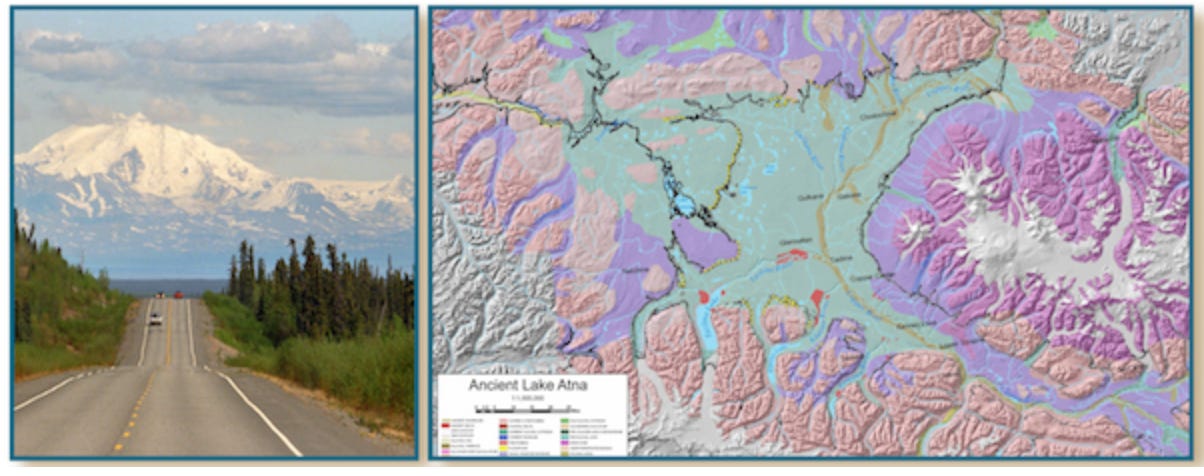
Glacial Lake Ahtna
Lake Ahtna—often spelled Atna—was a prehistoric proglacial (ice-frontage) lake which covered more than 3,500 square miles in the Copper River Basin, initially formed approximately 58,000 years ago during the Wisconsin glaciation, the most recent glacial period of the North American ice sheet complex. Other examples of prehistoric megafloods include Lake Agassiz and the Lake Missoula Floods, major catastrophic events resulting from the sudden drainage of proglacial or subglacial lakes, known by the Icelandic term jokulhlaups, and one such flood may have contributed to the destruction caused by the 1964 Alaska earthquake.

• There are two versions of this newsletter:
~ A free subscription - the version you’re reading now.
~ A paid subscription ($5/month or $40/year). Check it out with a free trial!
Thanks for reading, see you next week!
Helen Hegener, publisher
Northern Light Media



